Mexico-Tenochtitlan: July 18, 1325, Mexicah People Founded Modern-Day Mexico City
Please right-click on either image above to show video controls.
July 18, 1325, guided by their deity Huitzilopochtli, the Mexicah people's long journey from Aztatlan came to an end as they founded Mexico-Tenochtitlan. A marvelous engineering feat founded on an islet inside the great lake Texcoco, it was an extremely well planned and designed altepetl, or metropolis, and quite likely the largest and most efficiently run of its kind in the entire planet Tlalticpac (Earth).
Modern Mexico City has not even a shade of a semblance to what was once the great Mexico-Tenochtitlan altepetl. After its 'independence' from Spain in September 16, 1810, the colony of ruling Spaniard-descendants (criollos in Spanish dialect) even plundered the Mexicah's eponymous nation-state ethnic name to denominate the entirety of their dominion as well. Thus, hiding behind the mythological Mexico to advance their 'mother' country, Spain's, vicious 'culture', the New Spain oligarchy has only imposed corruption, religious fanaticism that blinds the masses to the abuses of the privileged church representing the elite, impunity based on institutionalized discrimination, and archaeological, environment and ecological destruction. All of these factors evidently combine to hinder and gradually degenerate -- rather than advance -- intellectual and human development of those inhabiting the now Spaniard-bastardized 'Mexico' colony.
"I am not leaving material patrimony for you and our son, ... I'm leaving you a moral and political legacy, dying as I am for a cause, in defense of the Mexican culture."
--Emmanuel D'Herrera
Nahuatl is the native language of Mexico. It was the language par excellence spoken by the true Mexicah people who founded Mexico-Tenochtitlan in 1325, 688 years ago. Yet in 1696, the Nahuatl language was banned in the New Spain by a decree of King Charles II of Spain. Notwithstanding, the New Spain continued to observe their king's decree even after their 'independence' from Spain in 1810 and their decision to be renamed as 'Mexico'. That is a subtle indication of whose directives are actually impulsed and implemented in Mexico, which have thus far caused irreversible damage even to the lake Texcoco itself --where the altpetl or metropolis was founded-- and by extension to its inhabitants.
Lake Texcoco... What Lake Texcoco?
"Pero de aquel majestuoso lago que se extendía desde el pueblo de Chalco, en el extremo sur, hasta el de Zumpango, en el límite norte, y que abarcaba cerca de 2 mil kms², hoy sobreviven sólo 10 kms²..."-- Aníbal Santiago
But of that majestic lake that extended from the pueblo of Chalco, at the extreme south, and reached the pueblo of Zumpango, at the northern limit, and which encompassed nearly 2 thousand kms², today only survive 10 kms²...
According to the Mexicah people's account of their long and arduous journey from Aztatlan (Place of the Herons), their revered deity Huitzilopochtli (Hummingbird of the South/Left) revealed a signal which predominantly guided them to their ultimate location. Prior to that, the Mexicah had been under the tutelage of Huitzilopochtli's sister, the great nahualli5 Malinalxochitl (Twisted Flower). It is said that the Mexicah underwent great suffering under Malinalxochitl's rule and that they begged Huitzilopochtli to deliver them from her tutelage.
Huitzilopochtli instructed his people to abandon his sister when she were deeply asleep and the Mexicah, ephemerally relieved, heeded his advice. When Malinalxochitl awoke and saw herself alone, she became furious and violently reacted by pitting her son Copal against his uncle. It is said that Huitzilopochtli defeated his belligerent nephew, killing him in sacrifice by extracting his yollohtli (heart) -- which the Deity subsequently threw into the emptiness, falling somewhere into lake Texcoco. That was the gist of the sign that Huitzilopochtli conveyed to his people: the Mexicah were to establish Mexico-Tenochtitlan where Copal's yollohtli --which had sunk somewhere in the lake Texcoco-- seeded the nohpalli (wide-leafed cactus) that they were to spot somewhere in the vast lake.
Arguably, there was more to the nohpalli symbol: (Remember that we were very poetic...)
after the catastrophic destruction by the Spaniards and their indigenous allies -- bitter enemies of the Mexicah -- now it is difficult to really determine what the hieroglyphic images represent; yet by reading the explanation below you will get a better idea on how our people understood the universal connection, the aspects of nature, and relation the elements had with one another.
Let me shed some light on what will be stated below because, even though you will have read the [] insertions that follow, the meaning is deeper than that conveyed by the visual perception of an actual physical image (of an eagle perched on a nohpalli).
- We didn't actually see [] an eagle [] proudly perched on top of a nohpalli -- what we saw was a powerful place where the sun (represented by the eagle) shimmered down displaying a place of grand intensity.
- We saw and felt, at night, a spot where the moonlight gave off a lovely aura of feminine peace, a calming vibration, which was a reassurance that this was the place to build our new home.
- [] The sun (i.e., the eagle, which also represents fire) [] is regarded as masculine, and the moon (which represents water) [] is regarded as feminine; together these two powerful forces represent the atl-tlachinolli; allow me to give a very brief explanation of this word (atl) [] means water and (tlachinolli) means fire, in Nahuatl. Combined, fire and water mean war (or seeking of balance).
- The nohpalli represents the land and the thorns represent struggle.
- The three rocks, as said in the insert, is the triple alliance between Tetzcoco6, Mexico-Tenochtitlan, and Tlacopan.
Over the field of xoxouhqui (raw/green or blue color) sovereignty irradiates Tonatiuh (the One who walks shining like fire, i.e., the Sun) as divine Metl (agave or maguey) and its blazing fire illuminates the Universe with his cihuametzin ('pencas' or rays) of light, (i.e., the Grand Gentleman who gives us life). In the center of the Sun [] transcends the august figure of Himself, and as in Teuhtihuacan on the so called perron of Quetzalcoatl we can contemplate the same solar symbol with His rays of light projecting what appears to be the head of an animal resembling an Ocelotl (jaguar), but which from a profile view morphs into a Cohuatl [Serpent] -- both symbols of the sun.7
Both (Ocelotl and Cohuatl) represent sovereign and dual divinity, yet in Tenochtitlan the sun is represented as a triumphant Cuauhtli [eagle], as described by P.Duran, J Acosta [1] and the Codex by Ramirez: 'In the early morning the eagle rises and extends its wings, absorbing the heat and the energy from the sun's rays while collecting the soothing coolness of the morning mist, and it held in its claws a magnificent bird of very precious and radiant feathers.' [2]
The eagle amplifies the solar --military-- shout. As the eagle shouts, it simultaneously disappears after giving life to the many inhabitants of the Anahuac (Surrounded by Water). The hieroglyphic, atl-tlachinolli, (which is misconstrued as a serpent/snake in the beak of a cuauhtli) corresponds with the symbols of water and fire, which over the course of generational ignorance and christian fanaticism have been distorted and confused with a serpent.
To the Nahuatl/Mexicah the prior misinterpretation is absurd, since the serpent is symbolic for [] divine wisdom (Quetzalcohuatl) and is a representation of Earth. This means the serpent could not have the solar eagle as an enemy for, if the eagle were to eat the serpent, would prevent (the serpent/snake) from fertilizing the earth.
In exploring the absurdity of the modern interpretation, we have exposed the false translation which originated with the translator of Alvarado Tezozómoc.[3] The Nahuatl text does not translate the meaning in detail. It provides a simple translation, which reads "place where the serpents whistle" (ihuancohuatl izomocayan8) [4]. The three rocks symbolize the triple foundation of the Federation of the Valley of Mexico: Tetzcoco, Tenochtitlan and Tlacopan.
Mexictli, where Metztli (the Moon) became Xictli (navel) to indicate the belly of our Mother Earth, is the place where the feminine light gives birth in blissful pleasure to our civilization; it is where the Mexicah encountered a rocky crag where metizintli [agave plants or magueyes] and nohpaltin are born. And perched radiantly on the nohpalli was a cuauhtli with its wings open and glaring -- as if challenging the sun -- intoning/chanting the shout 'Atl-tlachinolli!'. All the while proclaiming that mystical juncture where Cohuatl (Serpent) depicting Tlalticpac (Earth), Cuauhtli (Eagle itself), and Tonatiuh (Sun), are bound as one by the Great Being Huitzilopochtli. It was the symbology denoting the promised land.
9
Who created a system wherein one could rise upward only by repudiating one's native blood and exploiting native people?10
The destruction of the ancient Lake Texcoco by the fascist Spain settler spawn oligarchy's nefarious paradigm that prevails in the New Spain... er, 'Mexico', has been an overt attack at the quintessence of the Mexicah peoples' existence. Further, the desecration of revered ancient places like Teuhtihuacan, even by those whose main task should be the preservation of Mexico-Tenochtitlan ancient heritage but who in reality are unscrupulous corrupt individuals, is alarming. And the fraud-imposed politicians --who front for the stateless elite who rule Mexico from the shadows-- do practice a policy of deference to foreign interests; these, in turn, have engendered a climate of violence which is gradually destroying the fabric of Mexico's society.
Although normally I post about technology, I believe in the unfettered positive development of the human beings' potential. Thus, I will finally end this long post by encouraging the technological development of Mexicah people; they have endured 492 years of marginalization under violent institutionalized oppression and discrimination. Furthermore, the Spanish dialect apparently does not facilitate excellence in mathematics, science, and consequently, technology.10 Accordingly --for the real Mexico-- recovering its ancestral native language, Nahuatl, in addition to English --the language that leads technology innovation-- might prove to be a superb combination, for...
The Mexicans are what they always have been -- Mexicans. Since (and before) 1520 they have absorbed many non-Mexicans (including other Anishinabeg as well as Asiatics, Africans, Spaniards, and so on); and their culture has changed (as do all cultures). Fundamentally, the Mexican people go back into history as far as we can see into the past. They have no need to explain their present status by denying their continuous past or by genuflecting before the shrine of mestisaje! The word Mexican historically means Aztec-Nahuan. Isn't that enough?11--Jack Forbes
References:
Mindscape3D Case: Mexico-Tenochtitlan Altepetl.
The Bribery Aisle: How Wal-Mart Got Its Way in Mexico
El gran lago moribundo de Texcoco
5Nahualli: the fanatic Spaniards usually reduced its meaning to their concept of sorceress
6Texcoco is also known as Tetzcoco
7Note how the snake/serpent (apprehension) and the jaguar were dual symbols of the sun in Teuhtihuacan; but in Mexico-Tenochtitlan the snake is only associated with the Earth.
8Zozomoca(h): for a snake to hiss
9"Sent by Chiknawi Ejekatl" But I cannot locate the URL
10Jorge Edwards opina que "somos una lengua unida pero atrasada en ciencia y tecnología"
11Jack Forbes, The Mestizo Concept:...
DISCLAIMER:P although due diligence has been applied, the above post reflects an educated assessment of the dire situation faced by a marginalized and fragmented people.
Please do not hold me or Metztli Information Technology, or its associates, responsible if the information provided here does not achieve the desired result. The information is provided AS IS and with the hope that it may be useful to the target audience and the worldwide Internet community who may want to collaborate.
Notwithstanding, There is no implicit or explicit guarantee that the information presented here is accurate. You have been forewarned.
I reserve the right to modify the blog and even to delete it without further notice.
mencode Spanish/Españotli Subtitles in NASA Scientists' Maya 2012 Video.
"The World Didn't End Yesterday" [El Mundo No Terminó Ayer] video released by NASA prior to the Maya December 21, 2012, phenomenon is evidently intended to assuage potential concerns over the Judeo-Christian apocalyptic tendency inherent in the western psyche. On the other hand, for the Maya in Mexico and Guatemala this date is more of a celebration of their survival against all odds. The Maya have withstood genocide and brutal oppression by the Spanish since the early 1500s and until modern times under the rule of the Spaniards' descendants (criollos) in colonies such as 'Mexico', and Guatemala.
When I saw the original NASA video released a few days prior to the end of the 13 baktuns, in the Maya Long Count Calendar, I wondered why it was not released in the Spanish language as well. And after a couple of days passed, I decided that it might also be useful if at least Spanish subtitles were included.
I use GNU/Linux Debian and GNOME 3 as my main desktop. Thus, if I were to add subtitles I'd use free and open source software throughout this effort.
For a project like this, I had to download the original video at Youtube. Indeed, there multiple ways to go about the procedure but I used youtube-dl -- a python script to download Youtube videos. Under Debian, youtube-dl can be downloaded and installed thus:
apt-get install youtube-dl
To download a Youtube video all that is needed is to provide its link reference at the site. For easier use, at Google's Youtube site selecting the Share button will yield a shorter URL than what is seen at the browsers' top field. Feed that shorter URL to youtube-dl and use the -o option to give a name to the video you are about to download. For instance:
youtube-dl -o WorldDid-ntEnd.flv YoutubeShortLink
Will download the original video released by ScienceAtNASA and -o will rename the video to a custom file name of your choice with an .flv extension.
Once our target file is downloaded, then we can begin the process of adding the subtitles.
I came across GNOME-subtitles which, after becoming root or superuser, I was able to easily download and install as:
apt-get install gnome-subtitles
The application, once executed, enables us to load (select Video from the topmost bar) our previously downloaded video file and open up a temporary (until we assign it a name) subtitles file. We will be going backward or forward in the video as we synchronize our modifications and timing.
After we are satisfied with the created subtitles file, we save it (by default with a subtitle format SubRip *.srt) as well as character encoding (UTF-8), as shown below:
And then proceed into the actual encoding of its contents into a copy of the video we are manipulating.
Please note that GNOME-subtitles detected my Debian system character encoding appropriately. Sometime ago, when I installed the current instance of Debian into this particular machine, I selected English as default language with Spanish as secondary --both UTF-8.
Encoding Video with mencoder
The first tool I tried is mencoder, a command line utility that is part of the MPlayer: "a movie player which runs on many systems." Under Debian I installed utility as:
apt-get install mencoder
For the uninitiated, the long string of commands and options seems overbearing. If we ask for help by typing at our shell:
man mencoder
we get pages and pages of seemingly unintelligeble verbosity. Accordingly, we may search online for some simple example that matches our intention. In this particular case, I had articulated my intention as: add subtitles to an .flv output format so that it could be played with flowplayer and/or upload it to Youtube.
Suffice it to say that my initial encoding would not be rendered appropriately for the Spanish writing that I intended them. Subtitles would show question marks where accentuated characters should be rendered. Hence, I had to combine several hints and mencoder output help with sections in mencoder's manual pages to put together an articulate command string to achieve my aim.
mencoder inputFile.flv -oac mp3lame -ovc lavc -sub subTitlesFile.srt -subcp enca:es:utf-8 -subfont-text-scale 4 -subfont-outline 6 -of mpeg -o outputFile.flv
Note: make sure to have both, the video file and the subtitles file, at your current directory location in your Linux shell prior to executing mencoder command above to operate on those.
Although the above command may seem too complicated at first sight, mencoder helps us:
First we ask mencoder output for help on -oac:
mencoder -oac help
MEncoder 1.1-4.7 (C) 2000-2012 MPlayer TeamAvailable codecs:
copy - frame copy, without re-encoding (useful for AC3)
pcm - uncompressed PCM audio
mp3lame - cbr/abr/vbr MP3 using libmp3lame
lavc - FFmpeg audio encoder (MP2, AC3, ...)
twolame - Twolame MP2 audio encoder
faac - FAAC AAC audio encoder
Subsequently we request mencoder outpu help on -ovc:
mencoder -ovc help
MEncoder 1.1-4.7 (C) 2000-2012 MPlayer TeamAvailable codecs:
copy - frame copy, without re-encoding. Doesn't work with filters.
frameno - special audio-only file for 3-pass encoding, see DOCS.
raw - uncompressed video. Use fourcc option to set format explicitly.
nuv - nuppel video
lavc - libavcodec codecs - best quality!
libdv - DV encoding with libdv v0.9.5
xvid - XviD encoding
x264 - H.264 encoding
And finally ask mencoder -of help:
mencoder -of help
MEncoder 1.1-4.7 (C) 2000-2012 MPlayer TeamAvailable output formats:
avi - Microsoft Audio/Video Interleaved
mpeg - MPEG-1/2 system stream format
lavf - FFmpeg libavformat muxers
rawvideo - (video only, one stream only) raw stream, no muxing
rawaudio - (audio only, one stream only) raw stream, no muxing
Most importantly for this project is to adequately render Spanish accents on vowels, as well as other characters, among those are: ¿ and ¡. I was able to achieve that above with option fragment: -subcp enca:es:utf-8
Please see man mencoder and find or use utility grep to locate text string option -subfonts in output for explanations of the other options in the command above.
Well, I ended up with half the size of the original video (and it can be seen in the quality of the video) but I believe I achieved what I set out to do in the first place: convey the NASA scientists' message in the Spanish dialect. Hopefully those Spanish colonies 'Mexico' and Guatemala, as well as Central America, will take conscience of the importance of the Maya civilization and stop trying to annihilate their wonderful inhabitants.
From Google's Corporate Blog for 'Latin' America: Fin del 13er Baktún de los Mayas [End of the Maya's 13 Baktun(s)].
Friday, December 21, 2012 | 00:01
Mathematics, science and astronomy are issues for which we always have a passion. Therefore, with our doodle today, we celebrate the end of 13 Baktun of the Maya Long Count calendar. But what is its significance?
"Los Maya fueron matemáticos y astrónomos avanzados que calculaban los ciclos de la luna y del sol. Tenían formas muy precisas de medir el tiempo, una de estas formas es el Sistema de Cuenta Larga, en el que cada año tiene 18 meses de 20 [días cada uno]1. El sistema contempla también otras unidades como el Katún, equivalente a 20 años de nuestro calendario, y el Baktún, que equivale a 394 años."
The Maya were advanced mathematicians and astronomers who calculated the moon and the sun's cycles. They had very precise forms of measuring time, and one of these forms is the Long Count System, in which each year has 18 months of 20 days [each]2. Their system also took into account other units such as the Katun, equivalent to 20 years in our [West's] calendar, and the Baktun, which equals 394 years.
The importance of arriving at 13 Baktun, is that, it's very distinct from what happens with our [West's] calendar, there is no 14° Baktun. The count goes back to zero...continues below
continuing... But unlike of all the disaster stories that surely you may have come across, at the end of 13 Baktun, [analogous to the sequence] that ends on Sunday in our [western] calendars, it will be Monday once again and a new week begins. Those who have studied the theme, explain that this is how their calendrical system functions, and, though it represents the end of a cycle, it has no catastrophic significance.
DuckDuckGo search engine parodied the media disinformation hype.
Our doodle today represents the actual date, December 21, 2012, as well as 13 Baktun, to form the word Google. We hope that you enjoy as much as us this doodle, and may the start of the next Baktun be prosperous for all.
1mas un periodo conocido como Wayeb o Uayeb que consistían de 5 días adicionales sin nombre3.
2plus a period known as Wayeb or Uayeb consisting of 5 additional nameless days3.
3Wikipedia article: Maya Calendar
DISCLAIMER![]() although due diligence has been applied, the above post is intended as a proof of concept for encoding Spanish language subtitles in videos.
although due diligence has been applied, the above post is intended as a proof of concept for encoding Spanish language subtitles in videos.
Please do not hold me or Metztli Information Technology, or its associates, responsible if the information provided here does not achieve the desired result. The information is provided AS IS and with the hope that it may be useful to the Internet community.
Notwithstanding, There is no implicit or explicit guarantee that the information presented here is accurate. Accordingly, if an user(s) decide to implement the procedure or shell commands described here she, he, or them, do so at her, his, or their own risk. You have been forewarned.
I reserve the right to modify the blog and even to delete it without further notice.



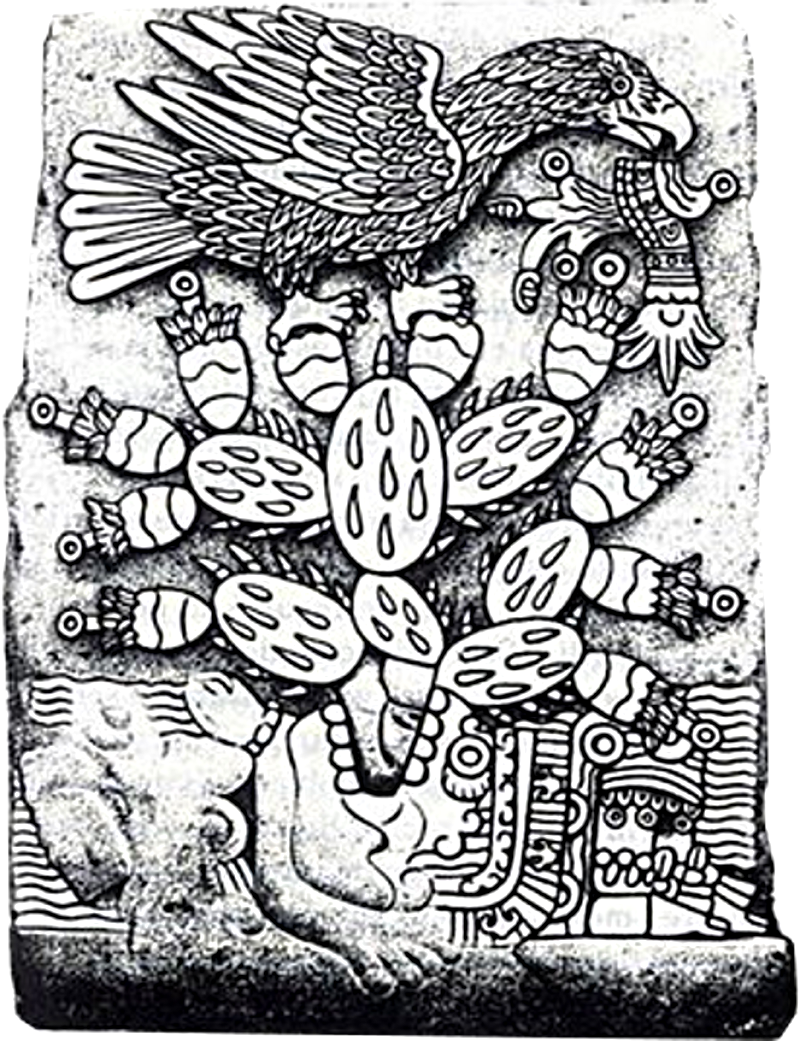
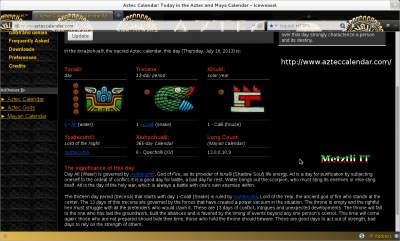

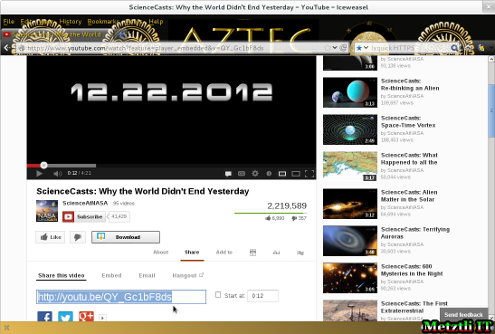
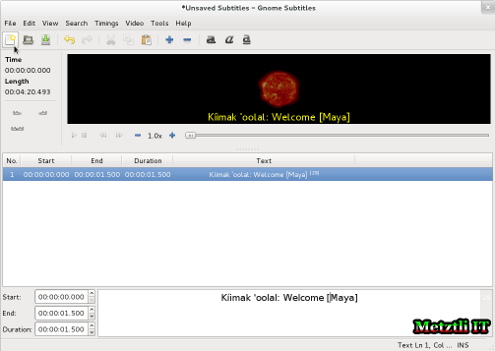
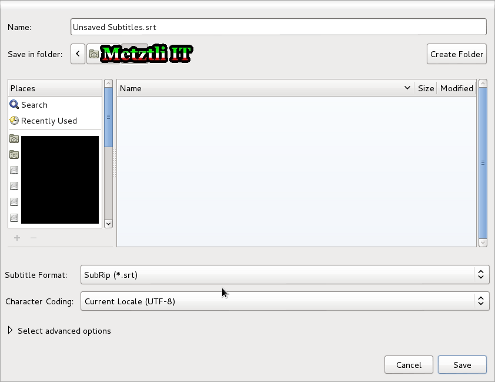

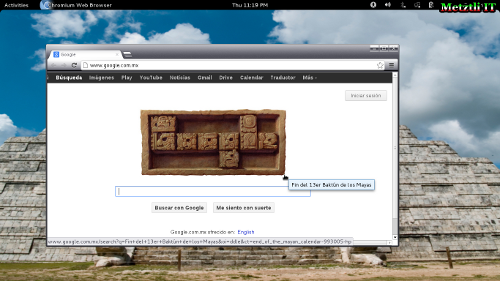
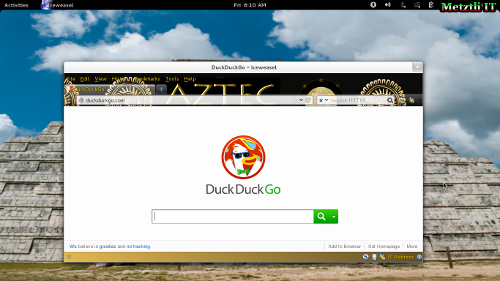





Recent comments: